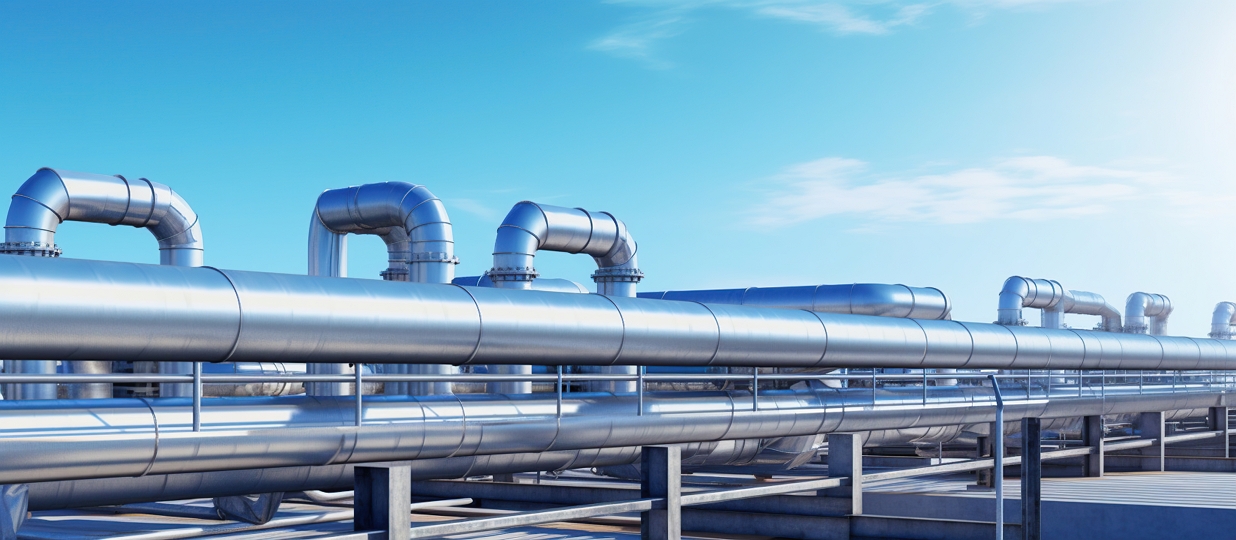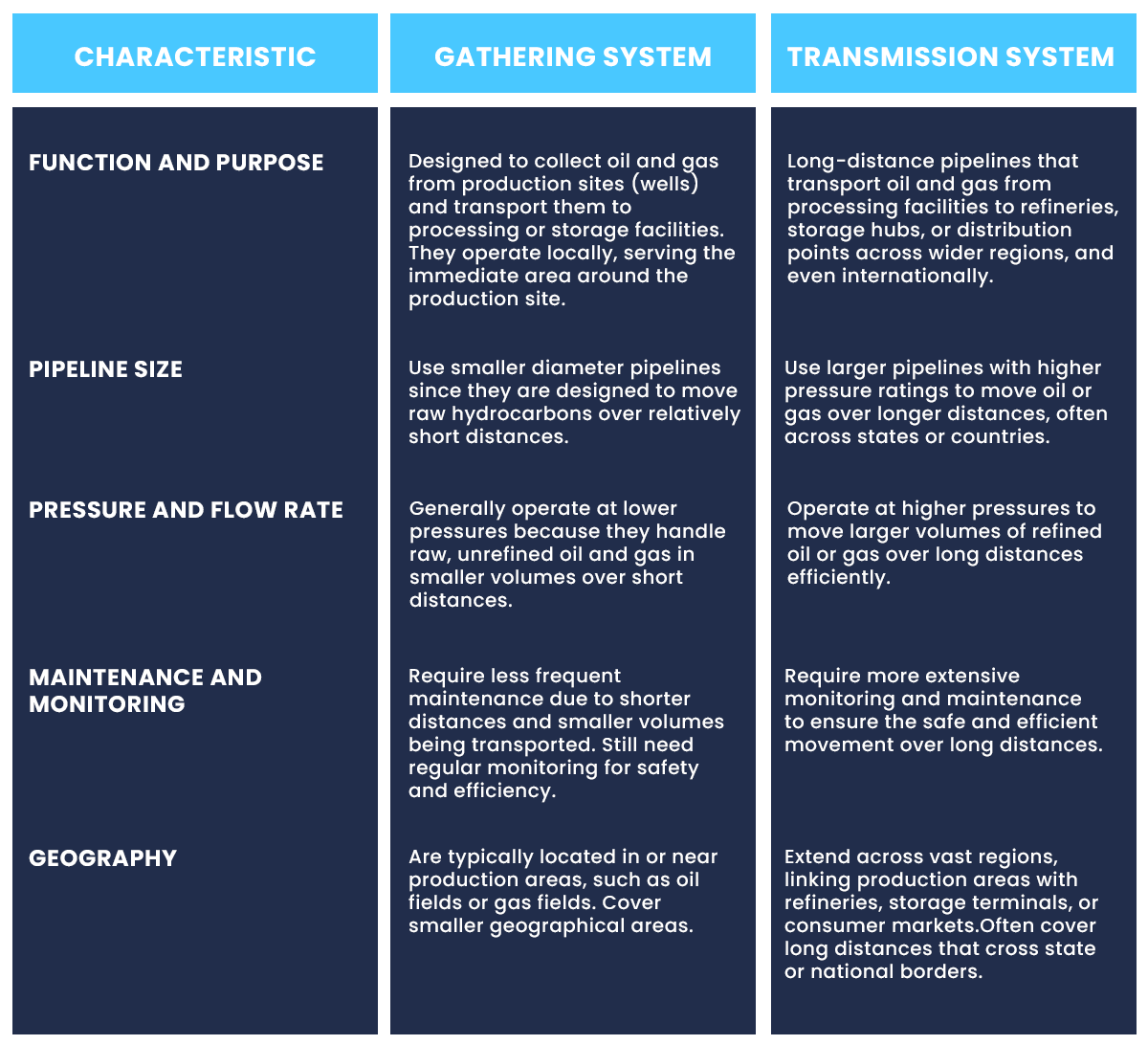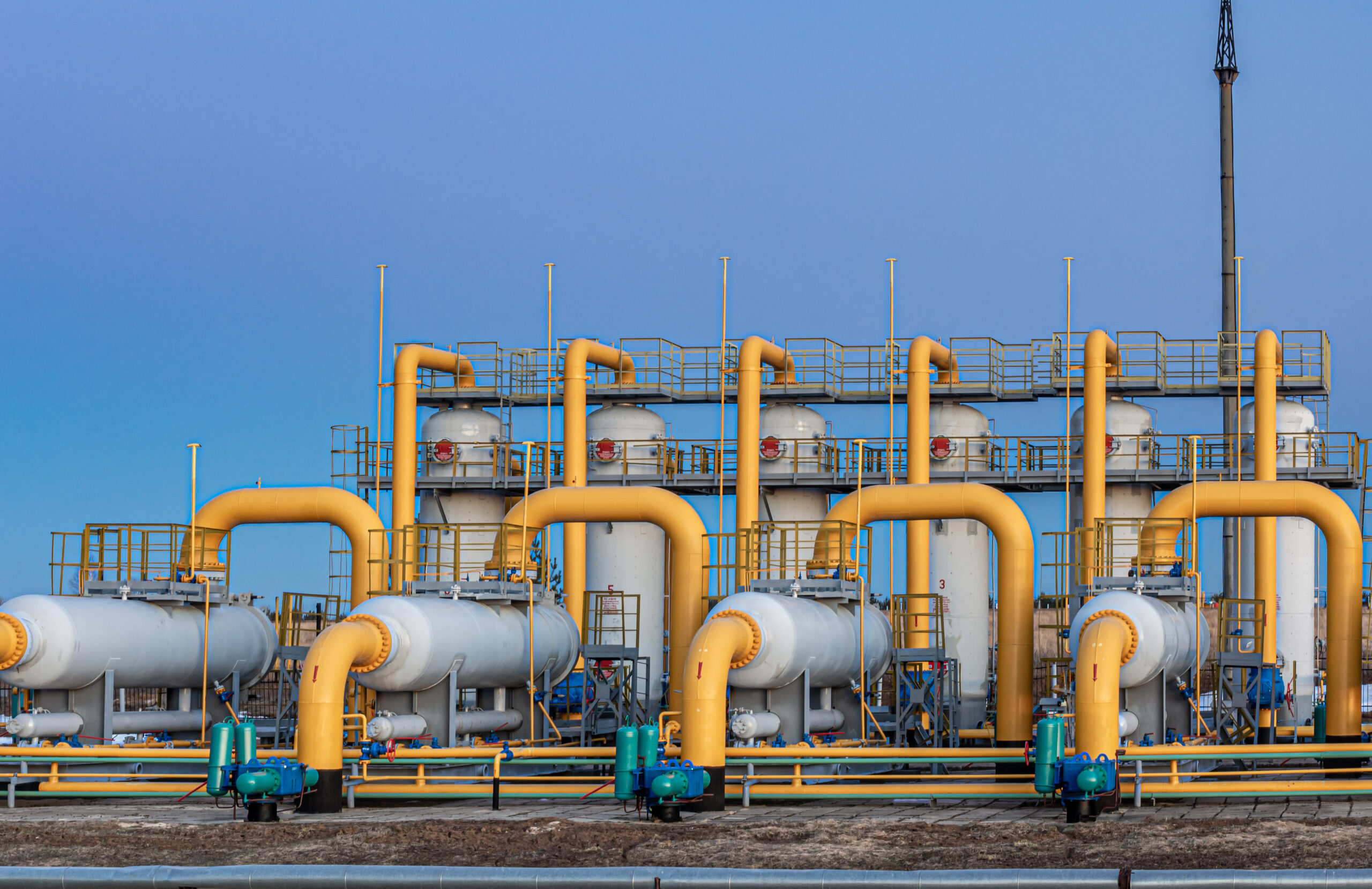The oil and gas industry is a global sector that provides the energy that is necessary to fuel transportation, industry, and electricity generation. This industry spans a vast supply chain, from exploration and production to refining and distribution, involving complex operations across diverse environments, from offshore drilling platforms to onshore extraction sites.
Getting oil and gas from production to end users is a highly complex and multi-step process that involves a range of technological, logistical, and regulatory challenges. After crude oil and natural gas are extracted, they must be transported, refined, and delivered to consumers in usable forms.
At the heart of this process lie the gathering systems that are a vital component of the oil and gas industry's infrastructure, playing a crucial role in the efficient transport of hydrocarbons from the wellhead to processing facilities or larger transmission pipelines.
#What are gathering systems?
Gathering systems refer to the network of pipelines, equipment, and infrastructure used to collect and transport crude oil, natural gas, and other by-products from production wells to processing facilities, storage, or larger transmission pipelines.
These systems are crucial for efficiently moving raw materials from the wellhead to central collection points or treatment facilities, where the oil and gas can be separated, purified, or further processed before reaching end users.
A typical gathering system includes the following key components:
Pipelines: These are the primary channels through which oil, gas, and other fluids flow from wellheads to processing facilities.
Compressor Stations: These are used to maintain pressure in the pipelines, ensuring the flow of gas over long distances to central processing facilities.
Storage Tanks: They are used to hold crude oil or produced fluids temporarily before they are transported for further processing.
Separation and Treatment Equipment: This equipment removes water, gas, and impurities from crude oil before it is transported to the next stage.
Valves and Flow Controls: These regulate the flow of oil, gas, or produced fluids through the system, ensuring the system operates safely and efficiently.
Measurement and Monitoring Systems: They help in leak detection and pressure regulation; while ensuring the accurate and safe transportation of hydrocarbons.

There are different types of gathering systems based on the nature of the resources being transported and the geographic and operational requirements. Some of these include:
Oil Gathering Systems: These systems collect crude oil from production wells and transport it to storage or processing facilities.
Gas Gathering Systems: They focus on collecting natural gas from wells.
Produced Water Gathering Systems: These are specifically designed to gather and transport produced water to disposal or treatment facilities.
Multi-phase Gathering Systems: Some are designed to handle oil, gas, and water in a single pipeline. These are commonly used in fields where production includes significant quantities of water, along with hydrocarbons.
While both the oil and gas gathering system and transmission system are essential for moving oil and gas through the supply chain, they serve different purposes and have distinct characteristics.
Some of these differences are mentioned below.

To learn more about Oil and Gas Gatherers, check TIES for Oil and Gas Gatherers.
#The Role of Gathering Systems in Oil and Gas
It acts as the first step in the transportation network, ensuring that the extracted resources are collected and moved safely and efficiently to where they can be further processed and refined for use.
Here’s a closer look at their pivotal role:
Collection of raw resources: To collect crude oil, natural gas, and other produced fluids directly from the production wells, the system is critical for moving these unrefined resources to locations where they can be separated and treated.
Efficient transport to processing facilities: This ensures that the crude oil, natural gas, and produced fluids reach central processing facilities where they are purified, treated, and separated.
Ensuring safety and reliability: These systems incorporate various safety mechanisms, such as valves, pressure relief devices, and flow monitoring to minimize the risk of leaks, spills, or accidents.
#Why are gathering systems essential?
Gathering systems are essential in the oil and gas industry for several key reasons. They serve as the crucial link between the extraction process at production sites and the next stages of processing, storage, and transportation.
They streamline the process of collecting, transporting, and processing raw oil and gas from production sites. They ensure safety, improve efficiency, and maintain the flow of hydrocarbons to downstream facilities. They are fundamental to the smooth operation of the energy industry, supporting the broader energy supply chain and contributing to meeting global energy demands.
Without gathering systems, the entire oil and gas supply chain would be disrupted, leading to inefficiencies, delays, and potential safety and environmental hazards.
.jpeg)
#Challenges and Considerations
While these systems are essential for the smooth functioning of the energy industry, they face numerous challenges, ranging from environmental concerns and safety risks to technological, regulatory, and financial considerations.
Addressing these challenges requires careful planning, ongoing maintenance, the integration of advanced technologies, and the ability to adapt to changing production and market conditions. Effective management of these issues is crucial for ensuring the safe, efficient, and environmentally responsible operation of gathering systems.
#The future of gathering systems
The future of gathering systems in the oil and gas industry is shaped by various factors, including technological advancements, evolving regulatory frameworks, environmental concerns, and changing market dynamics.
As the industry continues to face challenges such as increasing production volumes, sustainability goals, and safety concerns, the future will likely see significant changes.
It will be defined by increased automation, enhanced safety, environmental sustainability, and the integration of cutting-edge technologies like Artificial Intelligence, the Internet of Things, and data analytics.
As the energy industry evolves, gathering systems will play an even more vital role in supporting the efficient, safe, and environmentally responsible transport of hydrocarbons while adapting to the growing demand for cleaner energy solutions.




